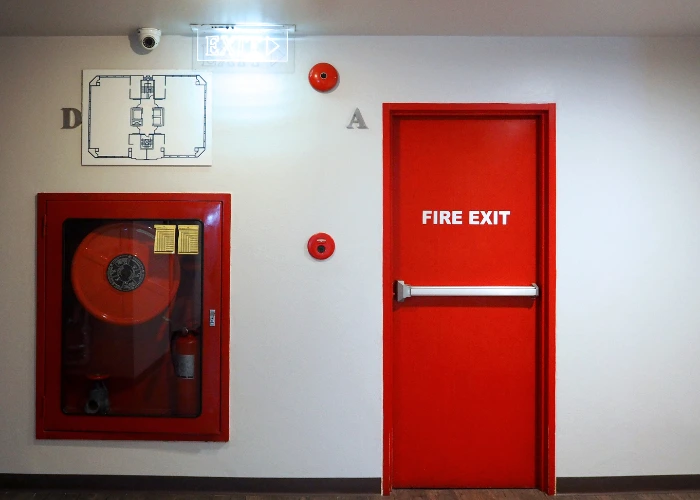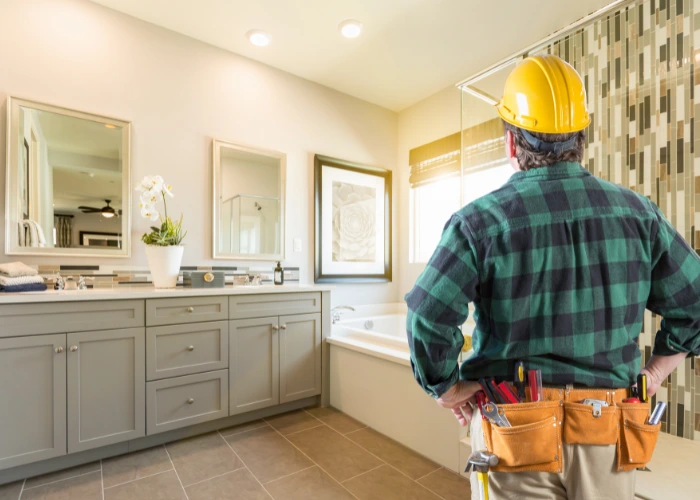
Accessibility in public spaces is crucial, particularly in bathrooms where individuals with disabilities require specific accommodations. California’s ADA bathroom compliance regulations ensure that facilities provide adequate access to water, toilets, and other essential bathroom fixtures for all users. These guidelines aim to create inclusive environments that cater to people with various disabilities, promoting independence and dignity. In this article, we will explore the key aspects of ADA bathroom compliance in California, including design requirements, modifications for commercial buildings, and the certification process. Keep reading to learn how businesses can navigate these regulations and create accessible bathrooms that meet the needs of all patrons.

California’s adherence to ADA bathroom requirements in commercial buildings encompasses a comprehensive set of regulations designed to ensure accessibility for individuals with disabilities. These standards govern various aspects of public toilet facilities, including the installation of grab bars, plumbing fixtures, and the display of the universal accessibility symbol. The legal framework for compliance in California builds upon the historical context of ADA bathroom accessibility, which has evolved since the Americans with Disabilities Act’s inception in 1990. Understanding these requirements is crucial for businesses and property owners to create inclusive environments and avoid potential legal issues.
The Americans with Disabilities Act of 1990 established nationwide standards for accessibility, which California has adopted and expanded upon to create a more inclusive community. ADA compliance in California encompasses a wide range of requirements for public accommodations, including bathroom facilities in commercial buildings.
These regulations ensure that individuals with disabilities have equal access to restroom facilities, addressing aspects such as doorway widths, turning space for wheelchairs (often referred to as the “60-inch turning radius” or “triangle” space), and the proper placement of fixtures and grab bars. California’s stringent adherence to these standards reflects its commitment to fostering an accessible environment for all residents and visitors.
The evolution of ADA bathroom accessibility in California traces back to the 1990 Americans with Disabilities Act, which set national standards for public facilities. This landmark legislation prompted significant changes in building design, mandating modifications to floor plans, shower installations, and sink heights to accommodate individuals with disabilities.
Over time, California has expanded upon these federal guidelines, implementing more stringent requirements for commercial buildings. These adaptations have led to the widespread installation of accessible features such as lowered hand dryers, non-slip flooring, and roll-in showers, reflecting the state’s commitment to inclusivity and equal access.
California’s legal framework for ADA bathroom compliance incorporates federal regulations and state-specific requirements. The California Building Code, which includes provisions for accessible toilets and fire alarm systems, sets stricter standards than federal guidelines, ensuring comprehensive accessibility in commercial construction projects.
The state’s enforcement mechanisms include regular inspections and potential fines for non-compliance. These regulations cover various aspects of bathroom design, from the placement of toilet paper dispensers to the installation of accessible fixtures, ensuring that all new construction and renovations meet the highest standards of accessibility.
California’s ADA bathroom design requirements establish specific criteria for commercial spaces, ensuring accessibility for individuals with disabilities. These guidelines encompass minimum space requirements, layout configurations, and specifications for essential fixtures such as toilets, sinks, and urinals. Additionally, the regulations address accessibility features for doorways and entries, including clear width measurements and maneuvering clearances. Bathroom designs must incorporate elements like grab bars, lowered mirrors, and braille signage. The requirements extend to various bathroom components, including bathtubs and shower facilities, emphasizing the importance of creating an inclusive environment within every inch of the room.
California’s ADA requirements for bathroom mandate specific spatial dimensions to ensure accessibility for individuals with disabilities. The layout must accommodate a 60-inch diameter turning space for wheelchairs, while also providing clear floor space around fixtures such as toilets, sinks, and mirrors. These regulations align with the International Building Code and extend beyond the bathroom itself, encompassing related areas like parking spaces and elevators.
The minimum space requirements dictate that toilet compartments must have a clear floor area of at least 60 inches wide and 56 inches deep for wall-hung toilets, or 59 inches deep for floor-mounted models. Additionally, the toilet seat height must fall between 17 and 19 inches from the floor, ensuring comfortable use for individuals with mobility impairments.
California’s ADA bathroom requirements specify precise dimensions for fixtures to ensure accessibility. Toilets must have a centerline 16 to 18 inches from the side wall, with grab bars installed at a specific height and length. The law mandates that toilet paper dispensers be placed within easy reach, typically 7 to 9 inches in front of the toilet bowl.
Sinks must have a knee clearance of at least 27 inches high, 30 inches wide, and 19 inches deep, with exposed pipes insulated or configured to protect against contact. These regulations extend to other elements such as mirrors, soap dispensers, and hand dryers, ensuring that individuals with disabilities can navigate the space without encountering stairs or other barriers.
California’s ADA regulations for bathroom doorways and entries ensure usability for individuals with disabilities. These requirements mandate a minimum clear width of 32 inches for doorways, with maneuvering clearances that accommodate wheelchair users. The regulations also address the height and operation of door handles, ensuring they can be easily grasped and operated.
The accessibility features extend beyond the bathroom itself, encompassing the path leading to the facility. This includes specifications for curb ramps, sidewalk slopes, and the placement of drinking fountains to ensure unobstructed access. These comprehensive guidelines aim to create a seamless transition from public spaces to bathroom facilities, promoting independence and dignity for all users.
Multi-user bathrooms in California must adhere to stringent ADA compliance standards, ensuring accessibility for all individuals. These regulations encompass the thoughtful arrangement of fixtures, including soap dispensers and cash registers, to optimize accessibility within the space. Privacy and safety considerations play a crucial role in design, addressing the needs of diverse users while maintaining a secure environment. Proper signage and wayfinding compliance guide users through the facility, providing essential information and directing them to accessible features. These requirements extend beyond public spaces, applying to multi-user bathrooms in various settings, from commercial buildings to dwellings. By incorporating these elements, designers create inclusive environments that accommodate all users, regardless of their abilities, while navigating aisles and other bathroom features.
California’s ADA compliance regulations for multi-user bathrooms mandate specific arrangements of fixtures to ensure optimal accessibility. Designers must consider the placement of toilets, sinks, and urinals to accommodate users of all genders and abilities. The layout must provide adequate knee and toe clearance beneath sinks, allowing wheelchair users to approach and use the facilities comfortably.
Proper placement of grab bars and handrails is crucial for supporting individuals with mobility challenges. These fixtures must be installed at appropriate heights and locations to facilitate easy transfer and movement within the bathroom. Additionally, hand dryers, soap dispensers, and other accessories should be positioned within reach of users with varying abilities, ensuring inclusive access to all bathroom amenities.
California’s ADA compliance regulations prioritize privacy and safety in multi-user bathroom design. Architects must consider dimensions that allow for proper spacing between stalls and fixtures, ensuring users have adequate room to maneuver without compromising personal space.
The design must incorporate features that promote safety, such as non-slip flooring and well-placed grab bars. Closet-like enclosures for paper towel dispensers and waste receptacles help maintain a clean and organized environment, contributing to both privacy and safety for all users.
California’s ADA compliance regulations mandate clear and accessible signage in multi-user bathrooms. These requirements include tactile and visual elements, such as raised characters and Braille, to assist individuals with visual impairments. Proper placement of signage helps users navigate the space efficiently, reducing the risk of confusion or potential lawsuits.
Wayfinding compliance extends beyond basic directional signs, incorporating elements like color contrast and consistent symbology. These features guide users to essential amenities, such as soap dispensers and towel holders, ensuring a seamless experience for all bathroom visitors. Effective signage and wayfinding strategies create an inclusive environment that accommodates diverse needs, from those of everyday users to individuals in specialized settings like prisons.
Commercial buildings in California must undergo rigorous inspections to ensure ADA bathroom compliance, addressing various elements from computer hardware controlling automatic doors to accessible toilet compartments. Assessing current bathroom accessibility forms the foundation for identifying necessary modifications, allowing property owners to prioritize upgrades that align with ADA standards. Common renovations often include widening doorways, installing grab bars, and adjusting fixture heights to enhance accessibility. These modifications not only ensure legal compliance but also create more inclusive environments for all users, reflecting California’s commitment to ADA accessibility in public spaces.



Navigating building code compliance means balancing three distinct frameworks: the Americans with Disabilities Act (ADA), the International Building Code (IBC), and the National Fire Protection

Vague ADA deficiency reports cost thousands in rework and project delays. Contractors need specific measurements, clear photographs, exact code references, and actionable remediation steps to